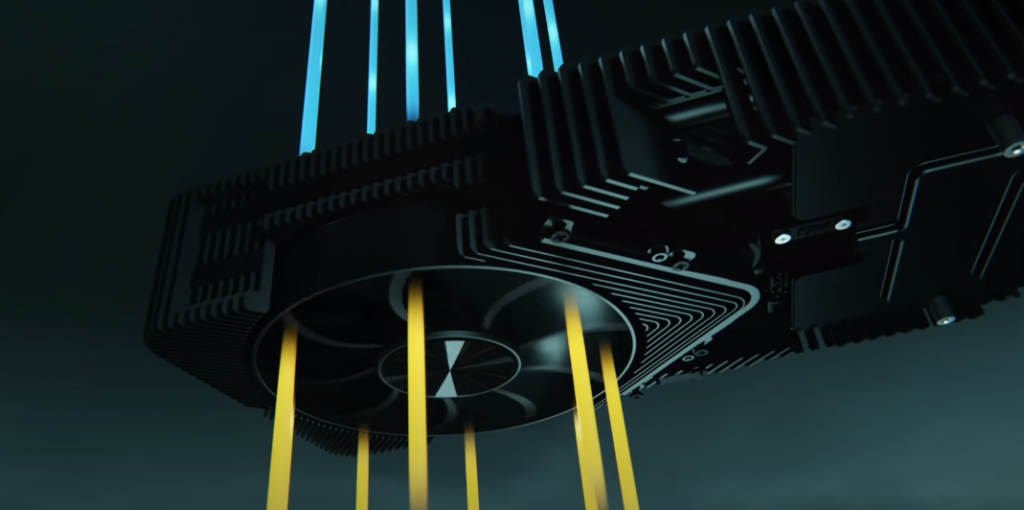If you care most about performance and are willing to sacrifice cost and power, then the Nvidia GeForce RTX 3080 Founders Edition is the most incredible graphics card you can buy now. Independent benchmarks and testing data have been collected after months of waiting. With the release of the Ampere architecture, Nvidia has thrown down the gauntlet to AMD’s Big Navi, daring it to compete.
A final judgment will have to wait till we finish testing the other third-party RTX 3080 cards we’ll be looking at starting tomorrow. That’s great news because it implies that, unlike with the RTX 20-series launch, customers won’t be restricted to Nvidia’s Founders Edition for the first month or two. The RTX 3080 FE can be purchased for $699 from Nvidia’s official website, and that pricing will remain the same for all RTX 3080 cards for now. The bad news is that we anticipate incredibly high demand and current supply levels will not be able to meet that demand.
Nvidia GeForce RTX Specs
| GPU | GA102 |
| Stream M8,704ultiprocessors | 68 (128 CUDA per SM) |
| CUDA Cores | 8,704 |
| Tensor cores | 272 |
| Ray tracing cores | 68 |
| Power Draw (TGP) | 320 W |
| Boost clock | 1,710MHz |
| VRAM | 10GB GDDR6X |
| Outputs | 1 x HDMI 2.1, 3 x DisplayPort 1.4 |
Pros
- Superb efficiency for 4K gaming
- Reduced heat levels
- A plethora of non-game-related elements
- The RTX 2080’s price was held steady
Cons
- Still pricey
- The ‘Dongle’ is a minor annoyance.
- The Founders Edition does not include a USB-C port
Price
The Nvidia GeForce RTX 3080 is now on sale, and the Founders Edition starts at $699 (£649, about AU$ 950). But, as with any big graphics card, there will be dozens of aftermarket graphics cards from companies like MSI, Asus, Zotac, and more.
Just know that some of these aftermarket cards may cost much more than this Founders Edition because they have unique cooling systems and factory-tuned overclocks. But the speed of every RTX 3080 should be about the same as the one that Nvidia has put out. It is less expensive than the Founders Edition card we looked at in our Nvidia GeForce RTX 2080 review, which cost $799 (£749, AU$1,199) when it first came out. Still, it’s way too expensive, especially when you add in the cost of extra cards.
It’s not as unbelievable as the Founders Edition card we looked at in our Nvidia GeForce RTX 3090 review, which cost $1,499 (£1,399, about AU$2,030) when it first came out. In our study of the Nvidia GeForce RTX 3070, the Founders Edition card costs a much more affordable $499 (£469, AU$809). The reference card in our AMD Radeon RX 6800 XT review and the Gigabyte card in our AMD Radeon RX 6900 XT review have MSRPs of $649 (about £649, AU$960) and $1,299 (about £1,040, AU$1,820), so the RTX 3080 is somewhere in the middle of this generation of cards.
Design
For the RTX 30 series, Nvidia has made significant visual changes to its Founders Edition GPUs. Even while the new design retains two axial fans, the PCB has been reworked and shortened by Nvidia such that the “back” of the card (away from the video ports) now only features a fan, heat pipes, radiator fins, and the typical graphics card shroud. The new design, according to Nvidia, significantly improves cooling and reduces noise. The plan’s success, in the long run, remains to be seen. We have heard that some people enjoy the new look, while others are not fond of it.
Neither the PCB nor the connectors are backlit in any way other than the white GeForce RTX logo on top and the ‘X’ on both sides (albeit just half of the ‘X’ is illuminated on the side bearing the “RTX 3080” logo). The new card has a nice design and a satisfying weight in my hand. It’s the largest single-GPU card Nvidia has ever produced, and it’s around 100g heavier than the previous iteration of the RTX 2080. It’s standard two-slot width and around 2cm longer than previous-generation cards. Almost set to make the 3080 FE look like a toy is the GeForce RTX 3090, with its massive three-slot cooler.
Features
The Ampere graphics architecture upon which the Nvidia GeForce RTX 3080 is built dramatically improves upon the Turing graphics architecture in terms of both raw performance and power efficiency. Due to Nvidia’s larger power budget and improved power efficiency over the RTX 2080, the total performance profile is significantly higher than any previous Nvidia Turing graphics card. Ray tracing (RT) and Tensor cores are clearly in their second and third generations of development, but the rasterization engine may have seen the most progress.
Since both data paths on each Streaming Multiprocessor (SM) are capable of handling Floating Point 32 (FP32) workloads, Nvidia was able to double the number of CUDA cores present on each SM, which is a significant improvement over Turing, where only one data path was dedicated to integer workloads. While this virtually doubles raw FP32 throughput core for core, it probably won’t significantly increase your favorite PC games’ frame rates.
